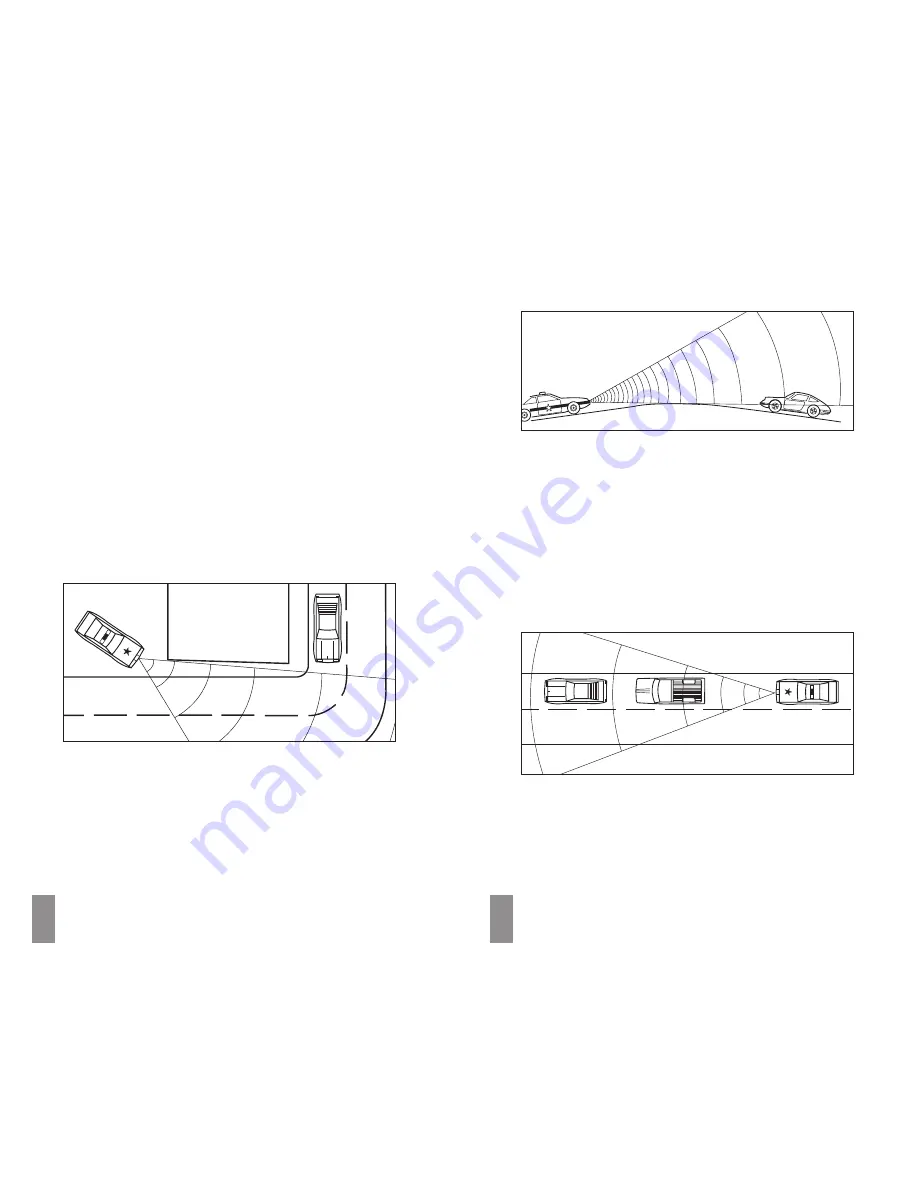
14
15
Since Radar signals travel in a straight line, this Radar
encounter potentially offers maximum warning range.
Once this signal is received, the initial warning
consists of the X, K, or Super Wideband Ka audio
and visual alerts and the simultaneous illumination of
one or more of the LEDs in the four-LED display. The
actual number displayed will depend upon the
strength of the signal received. As the strength of the
Radar signal increases, the audio alerts become more
rapid and more LEDs in the display will illuminate.
Assuming the Radar signal remains uninterrupted, the
audio and visual alerts will clearly indicate a “weak”
signal becoming stronger as you drive closer to the
Radar source. Remember, when the police Radar
source is moving toward you, the Radar signal
strength will increase much more rapidly than if you
are approaching a stationary source.
2. Stationary Radar aimed around a corner.
Under this circumstance, reaction time is considerably
reduced. Since the Radar signals are transmitted
across your line of travel, there is generally no signal
available to receive until you are relatively close to the
source. Once an alert is received, expect the strength
of the signal to increase very quickly. Advanced
warning in this situation may be reduced.
3. Stationary Radar concealed by the crest of a hill
aimed in your direction.
Radar signals travel in a straight line and do not pass
through earth. Consequently, police Radar aimed at
the crest of a steep hill cannot be received until you
are at or near the top. Warning time may be minimal
(as in situation #2) since a strong signal is not
present until you are near the crest of the hill. At
this point, you may be nearly in the police officer’s
line of sight. When cresting a hill, a weak initial alert
followed by very quickly by a full alert is typical. This
alert pattern requires prompt attention.
4. Moving Radar behind you, traveling in the same direction.
Police Radar signal transmitted from behind your
vehicle can be received when reflected by objects in
front of you such as large signs, bridges and trucks. As
you drive, the size and configuration of these objects
are constantly changing, causing the strength of any
reflected Radar signal received to vary. A strong,
uninterrupted alert indicates the patrol car is close
behind.






























